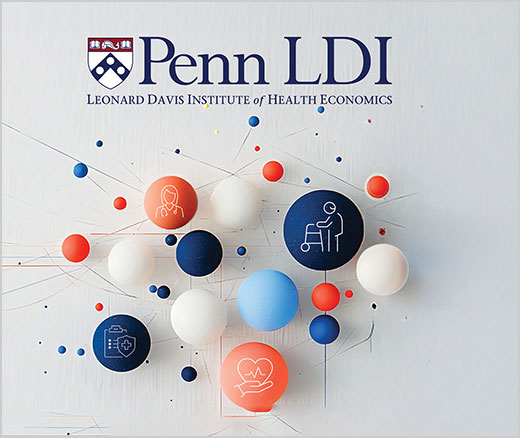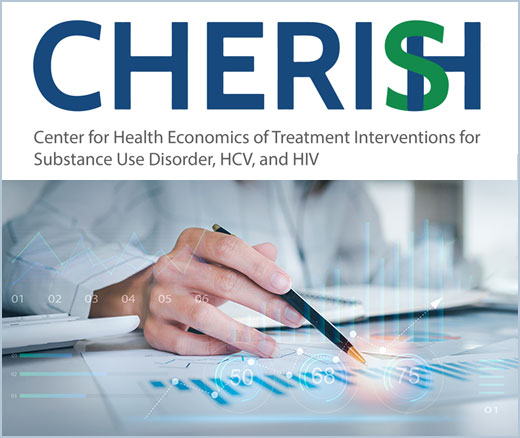
University of Pennsylvania Teams Up with CenterWell to Help Advance Primary Care Excellence and Access for Seniors
New Program Launches Research Initiatives Focused on Improving Primary Care for Older Adults
Health Care Payment and Financing
Blog Post

Medicare beneficiaries who are terminally ill can choose to entrust the end of their life to a hospice agency; each year, about half of Medicare beneficiaries who die receive hospice services. Enrolling in hospice means individuals forgo all other services related to their terminal illness, including curative care, and rely on the hospice agency to ease their pain and help them die with dignity. A new study by LDI Senior Fellow and Director of Research Norma Coe and her colleague David Rosenkranz shows that some hospice agency decision-making may be intended to increase payments by undercutting the annual revenue cap that Medicare imposes. But this “gaming” of the payment rules creates only modest increases in both hospice enrollment and spending. The study’s findings also support MedPAC’s view that wage index-adjusting the cap could make it more equitable across hospice programs, but the authors caution that the MedPAC proposal to reduce the cap by 20 percent might lead some hospice providers to close, and therefore requires more analysis.
Hospice care’s purpose is to reduce a patient’s pain and provide symptom relief, and keep them home with family and friends rather than an inpatient care setting at the end of life. There were about 5,000 Medicare-certified programs in 2020; most are based in a home health agency. The number of programs has more than doubled during 2001–2020, due largely to an increase in the number of for-profit hospice programs and the growth of private equity in the field. When hospice works well, it is associated with higher quality of care, fewer unmet needs, and fewer hospitalizations at end-of-life.
Medicare pays hospice programs a flat rate for each patient each day – about $141 to $206 per person per day in 2018 – but then limits programs’ payments annually with an “aggregate payment cap” based on the number of patients seen in that year. The cap is designed to prevent financially motivated health care providers from providing excessive hospice care by persuading Medicare beneficiaries to enroll too early or remain enrolled too long after their condition improves. In 2023, the annual per-enrollee cap was about $32,000, meaning that a hospice program that served 100 patients that year could have received no more than $3.2 million from Medicare. Any revenue above the cap is called “cap liability” and must be repaid at the end of each fiscal year.
Providers “gaming” payment systems to maximize profit has been documented in other areas of health care, such as hospitals and prescription drug pricing. News reports have highlighted potentially financially motivated hospice provider behavior. Coe and Rosenkranz wanted to investigate how common this behavior is and its impact on quality and cost.
The new study shows that hospice programs churn patients because of the cap on their average annual revenue. Not only do programs on track to exceed the cap increase the rate at which they discharge people alive—which could reduce their gross revenue—but they also increase new enrollments, which raises the cap and increases hospice spending. The authors also found evidence that the new people these programs enrolled were healthier on average and less connected to hospice care, which supports the idea that the cap causes programs to stretch to find additional enrollees.
The size of the programs’ adjustments to the cap is small: Hospice programs raised enrollment rates by 5.8% and live discharge rates by 4.3% when they were on track to exceed the cap. That translates to just 1.54 more enrollments and 0.37 more live discharges, on average, which would lower an average programs’ cap cap liability by $30,000-$50,000 at most. By contrast, programs that ultimately exceeded the cap had an average liability of $490,000.
The authors examined whether churning is associated with for-profit programs (that might be more sensitive to the cap), older programs (that might be more familiar with the cap), larger programs (that might invest in forecasting cap liabilities), or programs far from others on track to exceed the cap (that might compete less for marginal enrollees). They did not find associations between these characteristics and churning.
Instead, they believe that their findings support the idea that churning is hard to do, because of other features of the Medicare hospice benefit. In particular, the requirements that the patient’s other medical providers be consulted in enrollment and live discharge decisions and that Medicare beneficiaries who enroll in hospice care forgo coverage for their terminal illnesses both may serve to limit churning.
The researchers note that while churning could theoretically harm patients by reducing their access to curative care, they did not find evidence that newly enrolled individuals were more likely to exit hospice within 30 days. And they did not find evidence that live-discharged patients suffered more burdensome transitions or were less likely to resume hospice care. Churning may also affect Medicare non-hospice spending by lowering end-of-life hospital and skilled nursing facility spending. The authors conclude that while programs undercut the cap by churning, their efforts may have lowered Medicare spending on other health care services by raising hospice enrollment.
MedPAC, the independent agency advising Congress on the Medicare program, has recommended reducing the cap and pegging it to geographic variation in payment rates. The study’s findings support the idea that the geographic adjustments would make the cap more equitable across hospice programs. Because they did, however, find an association between cap liabilities and withdrawing from participating in the Medicare program, the authors caution that policymakers will want to continue to examine the cap’s effect on market composition before lowering the cap by 20 percent.
The study “Provider Payment Incentives: Evidence from the U.S. hospice Industry” by Norma B. Coe and David A. Rosenkranz appeared in the August 2025 issue of The Journal of Public Economics.


New Program Launches Research Initiatives Focused on Improving Primary Care for Older Adults

Rural Parents Had More Emergency Visits and Insurance Loss Than Urban Peers, an LDI Study Shows. Integrated Baby Visits Could Help All Parents Be Healthier

Penn and Four Other Partners Focus on the Health Economics of Substance Use Disorder

Experts Say Nursing Ethics Can Help Researchers Confront Federal Disinvestment, Defend Science, and Advance Health Equity

Study Finds Major Gaps in Cardiac Care Behind Bars

Penn Medicine’s New Summer Intern Program Immersed Teens in Street Outreach Techniques